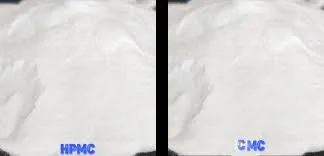
Dec . 12, 2024 10:27 Back to list
hydroxyethyl cellulose solubility in ethanol
Hydroxyethyl Cellulose Solubility in Ethanol An Overview
Hydroxyethyl cellulose (HEC) is a non-ionic water-soluble polymer derived from cellulose, extensively utilized in various applications, including pharmaceuticals, food, cosmetics, and construction materials. Its unique chemical structure enables it to interact favorably with a wide range of solvents, making understanding its solubility behavior crucial for optimizing formulations in which it is used. One such area of interest is HEC's solubility in ethanol, a common organic solvent with diverse applications.
To begin, it's essential to recognize the chemical structure of hydroxyethyl cellulose. It consists of a cellulose backbone with hydroxyethyl groups substituted at hydroxyl positions. This modification enhances the water solubility of cellulose, making HEC a valuable ingredient in various aqueous formulations. However, its solubility profile in organic solvents like ethanol is more complex due to differences in polarity and hydrogen bonding capabilities.
Ethanol is classified as a polar solvent, but it has a relatively lower polarity compared to water. It is capable of forming hydrogen bonds, but its capacity to solvate hydroxyethyl cellulose significantly depends on the concentration of the polymer and the temperature. Generally, HEC shows limited solubility in ethanol, especially at room temperature. This lack of solubility poses challenges in applications where combination with ethanol is desired.
The limited solubility of hydroxyethyl cellulose in ethanol can be attributed to several factors. First, the hydrophilic nature of the hydroxyethyl groups on the cellulose chain competes with the hydrogen bonding characteristics of ethanol. When HEC is introduced to an ethanol environment, water molecules tend to solvate the hydrophilic regions more effectively than ethanol, leading to reduced polymer dissolution.
hydroxyethyl cellulose solubility in ethanol

Temperature also plays a critical role in solubility. Increased temperatures typically enhance the solubility of polymers in solvents due to increased molecular motion, which disrupts intermolecular interactions within the polymer's structure. As temperature rises, the viscosity of the ethanol decreases, which may allow for increased interactions between HEC and ethanol. However, even at elevated temperatures, the solubility remains comparatively low.
Several strategies can be employed to improve the solubility of hydroxyethyl cellulose in ethanol. One effective method is to modify the polymer’s molecular weight or degree of substitution, which can impact its solubility characteristics. Lower molecular weight HEC grades generally exhibit better solubility in ethanol compared to higher molecular weight variants. Additionally, blending HEC with co-solvents or using solvents with intermediate polarity can facilitate its incorporation in ethanol-based formulations.
The limited solubility of HEC in ethanol does not diminish its importance in formulations where ethanol presence is necessary. In the pharmaceutical industry, for example, HEC's thickening and stabilizing properties are beneficial in gel formulations that incorporate ethanol. Its ability to retain moisture and enhance the texture of products is invaluable in personal care formulations, where it can be combined with ethanol to create stable emulsions or clear gels for skincare.
In the food industry, hydroxyethyl cellulose can act as a stabilizer or thickener in low-alcohol food products. Although solubility in ethanol may be limited, the synergistic effects of HEC with other food additives can lead to improved texture and shelf stability. The smart formulation design can leverage the properties of HEC, even with its restricted solubility.
In conclusion, while hydroxyethyl cellulose exhibits limited solubility in ethanol, its multifunctional properties allow it to be effectively utilized in formulations containing this solvent. Understanding and manipulating its solubility characteristics through molecular modifications, temperature adjustments, and co-solvent applications offer potential pathways to optimize its use. The ongoing research into polymer solubility behavior not only enriches our fundamental knowledge but also drives innovation and efficiency in numerous industrial applications, ensuring that HEC continues to play a significant role across diverse sectors.
-
Versatile Hpmc Uses in Different Industries
NewsJun.19,2025
-
Redispersible Powder's Role in Enhancing Durability of Construction Products
NewsJun.19,2025
-
Hydroxyethyl Cellulose Applications Driving Green Industrial Processes
NewsJun.19,2025
-
Exploring Different Redispersible Polymer Powder
NewsJun.19,2025
-
Choosing the Right Mortar Bonding Agent
NewsJun.19,2025
-
Applications and Significance of China Hpmc in Modern Industries
NewsJun.19,2025







